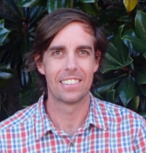DNA reveals the past and future of coral reefs
New DNA techniques are being used to understand how coral reacted to the end of the last ice age in order to better predict how they will cope with current changes to the climate. James Cook Univer

From 2005 to 2022, the main node of the ARC Centre of Excellence for Coral Reef Studies was headquartered at James Cook University in Townsville, Queensland (Australia)








Abstract: I will present some findings showing genetically-identified cryptic coral species within a functional group differing in their response to disturbance (bleaching), environmental gradients (depth), and symbiont community. These findings suggest a role for response diversity in driving ecological resilience at Moorea, but also highlight the vulnerability of previously unrecognized populations that are smaller than expected based on morphological classifications of ‘species’. At Moorea, broadcast-spawning Pocillopora corals dominate the reef and species are notorisouly difficult to reliably to tell apart in the field. As a result, researchers in the past typically grouped them according to morphology, which hides evolutionarily distinct genetic lineages. In 2019, coral bleaching occurred at Moorea. What looked like larger colonies bleaching and dieing more than smaller colonies turned out instead to be differences among at least five cryptic species. While not all species died from bleaching, the specific genetic lineage in which most colonies died happened to have larger colonies and has so far only been found at Moorea. The bleaching event was caused by a sub-surface heatwave, governed by a reduction in cooling from internal waves. As a result, the 2019 marine heatwave at Moorea was completely missed by satellite-derived estimates of sea surface temperature and degree heating weeks, which are commonly used to monitor thermal stress on coral reefs.
Biography: Scott Burgess is an Associate Professor at Florida State University (FSU). Research in his lab group combines ecological and evolutionary principles to study the population biology of coastal marine invertebrates (mostly corals and bryozoans). He has been working on coral reefs for about 20 years, beginning with a formative JCU Honors project at One Tree Island on larval fish dispersal. Since then he worked at AIMS in the LTMP, then did a PhD at UQ, then moved to the US to do a Postdoc at UC Davis. He has been at FSU since 2014, and does field work at Moorea, French Polynesia. He is broadly interested larval dispersal, reproductive strategies, and adaptation to variable environments. He typically uses some combination of field and laboratory experiments, molecular genetic approaches, and mathematical modeling.
New DNA techniques are being used to understand how coral reacted to the end of the last ice age in order to better predict how they will cope with current changes to the climate. James Cook Univer
A new study on the effects of climate change in five tropical countries has found fisheries are in more trouble than agriculture, and poor people are in the most danger. Distinguished Profess
James Cook University researchers have found brightly coloured fish are becoming increasingly rare as coral declines, with the phenomenon likely to get worse in the future. Christopher Hemingson, a
Researchers working with stakeholders in the Great Barrier Reef region have come up with ideas on how groups responsible for looking after the reef can operate more effectively when the next bleaching
Abstract: As marine species adapt to climate change, their heat tolerance will likely be under strong selection. Individual variation in heat tolerance and its heritability underpin the potential fo
Abstract: The Reef Ecology Lab in KAUST’s Red Sea Research Center explores many aspects of movement ecology of marine organisms, ranging from adult migrations to intergenerational larval dispersal
Abstract: Macroalgal meadows are a prominent, yet often maligned component of the tropical seascape. Our work at Ningaloo reef in WA demonstrate that canopy forming macroalgae provide habitat for ad
Abstract: Sharks are generally perceived as strong and fearsome animals. With fossils dating back at least 420 million years, sharks are not only majestic top predators but they also outlived dinosa
Abstract: Connectivity plays a vital role in many ecosystems through its effects on fundamental ecological and evolutionary processes. Its consequences for populations and metapopulations have been
Abstract: Evolution of many eukaryotic organisms is affected by interactions with microbes. Microbial symbioses can ultimately reflect host’s diet, habitat range, and even body shape. However, how
Abstract: The past few years have seen unprecedented coral bleaching and mortality on the Great Barrier Reef (GBR) but the consequences of this on biodiversity are not yet known. This talk will expl